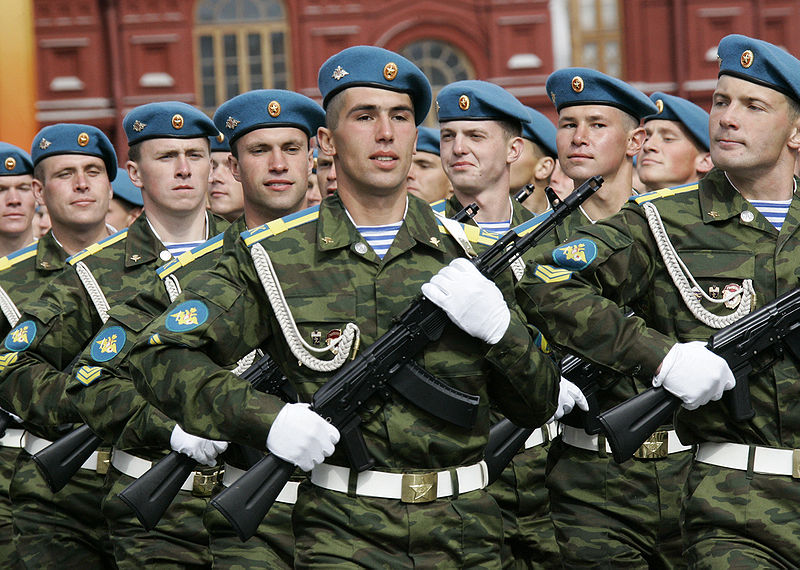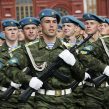
Russia’s Airborne Forces Await Fresh Reform
Publication: Eurasia Daily Monitor Volume: 9 Issue: 87
By:

Newly inaugurated Russian President Vladimir Putin has given clear signals that the military will experience a fresh wave of reform during his first six-year term in office. Putin is also likely to play hardball with Washington on missile defense, as shown by the threat to take pre-emptive action announced during the conference on the issue in Moscow on May 3 by the Chief of the General Staff, Army-General Nikolai Makarov. Putin’s military priorities range from modernizing the nuclear deterrent to at least claiming that, in the event of failure to reach agreement to cooperate on missile defense, potential exists for asymmetrical action. These priorities are equally coupled with a tangible underlying effort to reassert the aims and meaning of reforming and modernizing the country’s conventional Armed Forces (Interfax, May 7; RIA Novosti, May 4).
Since the reform of Russia’s Armed Forces began in 2008, the elite airborne forces (Vozdushno Desantnye Voiska – VDV) protected themselves from the full onslaught of transitioning to a new brigade-based structure, and their commander tried to minimize the impact of officer downsizing as well as demanding increases in the numbers of contract personnel. The latter aims were arguably more important to preserve the deployment capabilities for the VDV. Though these goals were subject to only very limited progress, the “valiant” effort by VDV Commander Lieutenant-General Vladimir Shamanov to preserve the division-based system was less logical in its nature. Shamanov knew that the VDV deployed for combat operations with brigade headquarters and had seldom exclusively used its division-based structure in real terms, while his arguments in favor of the status quo were more likely rooted in protecting the VDV from any inadvertent weakening as the reform advanced throughout the Armed Forces (Interfax, May 20, 2009).
In early April 2012, there were growing signs that reform may still come to the VDV, ranging from intensifying combat training to the public admission that the divisional structure was retained to allow the wider reform to proceed under the protective umbrella of the VDV. And Vladimir Putin’s article on defense in Rossiskaya Gazeta on February 20 implied that change would continue for some time to come in the Russian military. On April 2, the Defense Ministry stated that the combat training year for the VDV would witness a 25 percent increase in intensity year-on-year, with four times as many command post exercises, doubling battalion and company level tactical exercises, and raising platoon level live fire exercises by 15 percent. These changes to the VDV combat training year were also aimed at reflecting changes to programs of instruction and rehearsing new tactics (Interfax, April 2).
On April 9, following a three year reprieve, the Defense Ministry announced that the VDV will finally transition to a new structure of manning and organization. Sources in the General Staff indicated that the basis of the transformation is to break up the existing divisions and reform the VDV based on its air assault brigades. The aim of switching to the brigade-based structure in the airborne forces is to enhance mobility and increase manpower by 20 to 30 percent (Interfax, April 9).
The former VDV Commander Colonel-General Georgiy Shpak stated that the VDV’s “conversion to a brigade structure will be a new page in the development of the ‘winged infantry’ at the contemporary stage. If the VDV divisions are to consist of three-battalion-strong brigades, then this will constitute a new page in our troops’ development, it will markedly reinforce the combat potential of the divisions and their capacity to operate independently while separated from the main body and in important sectors” (Vzglad, April 9).
Other Russian military experts expressed skepticism as to whether the reform of the VDV in this manner might actually result in any improvement to mobility, while others questioned how the VDV brigades would operate in the reformed structure. Colonel-General (retired) Leonid Ivashov, the Chairman of the Academy of Geopolitical Problems, highlighted unresolved problems in the latest reform initiative: “They are always talking about mobility. But military transport aviation is withering away; it is getting smaller and smaller. According to my information, today it is capable of dropping only four battalions in one operation. While the rest, however you have trained them, are transformed into infantry. This is all the mobility we have” (Vzglad, April 9).
In an interview with Krasnaya Zvezda, the VDV Commander, General Shamanov, confirmed that VDV reform is imminent and explained that the command is working on a concept of VDV development until 2025, with a report on its progress due to be offered to the defense ministry collegium in May 2012. Shamanov also supported Shpak’s call to increase the mobility of the Collective Security Treaty Organization (CSTO) Rapid Reaction Forces (Kollektivnye Sil Operativnogo Reagirovaniya – KSOR) by further developing the use of Kant airbase in Kyrgyzstan as a forward base to support future VDV operations in Central Asia. Moreover, Shamanov stated that the initial planning to reform the VDV to 2016 may be further revised after the discussions in the defense ministry collegium. In particular he wants the inclusion of helicopter subunits in the VDV, including transport helicopters and other classes such as combat, command and control and electronic warfare; such air support in his view would maximize the potential use of the VDV in combat operations (Krasnaya Zvezda, April 9).
Drawing on this atmosphere of impending change, partly triggered by Putin’s February article and the sense of drift in the rather amorphous reform agenda, Sergei Konovalov offered a possible National Guard as another potential change impacting on the VDV. Konovalov’s sources had suggested that a National Guard subordinate to the president may be formed out of the interior troops, VDV, Air force, Navy, Military Police and other power ministries. However, Konovalov’s interlocutors outlined a much more plausible response to Putin’s article and return to the Kremlin by suggesting that the Security Council, Presidential Staff and the Defense Ministry are preparing a new “Defense Plan” for Russia rooted in the main themes of Putin’s article (Nezavisimoye Voyennoye Obozreniye, April 3).
Putin may well seek to re-energize the failing defense reform, but in so doing he will need to clearly outline the priorities and specify the goals of such reform in a way that his predecessor failed to do. The NATO drawdown in Afghanistan by 2014, missile defense, and the crises over Iran and Syria are factors that may complicate or even derail the freshly baked reform agenda.




